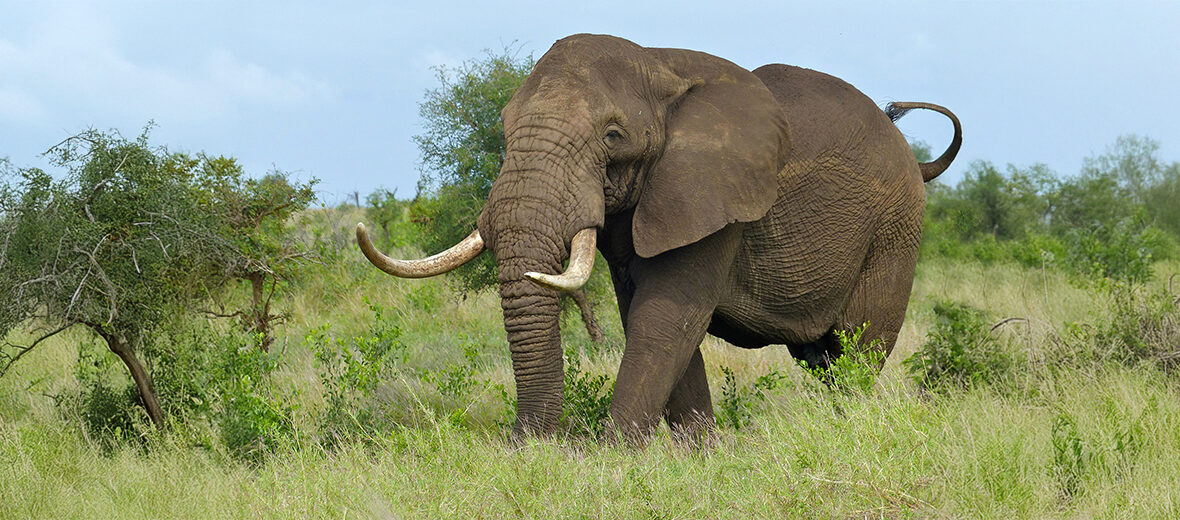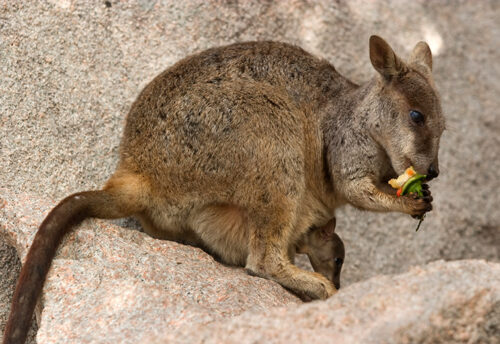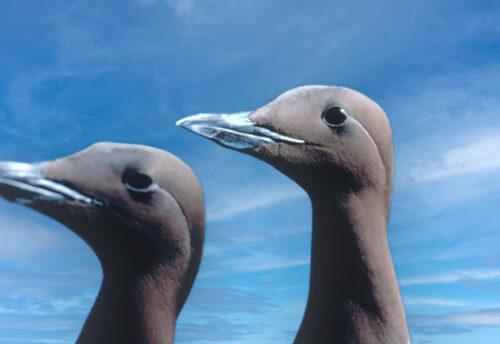
The African savanna elephant, aka African bush elephant, is native to sub-Saharan Africa. It is 1 of 3 extant elephant species and, along with the African forest elephant, 1 of 2 extant species of African elephant. Like other elephant species, their existence is wrought with adversity. They face many threats such as habitat loss and destruction at the hands of residential and commercial developments, farming, ranching, tourism, oil and gas drilling, mining, quarrying, fires, fire suppression, logging, and wood collection; renewable energy, in the form of dams, that suppress water from reaching their habitat; roads and railroads, that divide their territory and can result in vehicle strike (being hit by vehicles); war; civil unrest; military exercises; invasive species, in the form of domesticated animals out-competing the elephants for food; climate change, that causes severe droughts; hunting, for bush meat and their tusks; and trapping to later be killed for use in traditional medicine. The IUCN lists these beautiful creatures as Endangered. Their population trend is listed as decreasing.
First the Stats…
Scientific name: Loxodonta africana
Weight: Up to 23,000 lbs.
Length: Up to 24 feet
Height: Up to 13 feet, at the shoulders
Lifespan: Up to 70 years
Now on to the Facts!
1.) These are the largest land mammals on earth.
2.) They can tolerate a wide range of habitats like forests, grasslands, wetlands, woodlands, and agricultural lands.
3.) Creepers, grasses, herbs, leaves, and even bark are all happily consumed.
4.) Herds are matriarchal and consist of females (cows) and their offspring. Males (bulls) live alone or in small bachelor herds.
5.) During the mating season, males go through a process termed as musth, which is a period of high testosterone levels and increased aggression.
But wait, there’s more on the African savanna elephant!
6.) The female’s menstrual cycle lasts 3 – 4 months.
7.) Females undergo up to a 22 month gestation (pregnancy) that yields a single calf. This gestation period is the longest of any known mammal.
Did you know…?
These massive creatures can consume up to 330 lbs. of vegetation and up to 61 gallons of water a day!
8.) An elephant calf can weigh in at up to 260 lbs.
9.) Unfortunately, Chad is a major transit country for the smuggling of ivory in West Africa.
10.) Thanks to improved law enforcement and penalties, much of the senseless killing has been culled, yet still exists to this day.
But wait, there’s still more on the African savanna elephant!
11.) Johann Friedrich Blumenbach first described these elephants in 1797.
12.) The family unit is led by a matriarch (female) who at times also leads the kinship group. A kinship group is described as 2 or more family units.
Did you know…?
Their ears can grow as large as 6.7 feet × 4.11 feet!
13.) Young bulls eventually separate from the family unit when they are between 10 – 19 years of age. They typically range alone for some time or form all-male groups, aka bachelor herds.
14.) They have curved skin with bending cracks, that support thermoregulation by retaining water. These cracks contribute to an evaporative cooling process that helps to maintain body temperature via homeothermy regardless of the surrounding air temperature.
15.) These elephants utilize their trunks for tactile communication. When greeting, a lower ranking member will insert the tip of their trunk into their superior’s mouth. Elephants will also stretch out their trunk toward an approaching individual that they wish to greet.
But wait, there’s still a bit more on the African savanna elephant!
16.) Mother elephants often reassure their young with touches, embraces, and rubs with the foot while slapping disciplines them. During courtship, a couple will caress and intertwine with their trunks while playing and fighting individuals wrestle with them.
17.) They also communicate via growls, rumbles, screams, squeals, and trumpets.
Did you know…?
Their tusks can grow to 11.5 feet and weigh as much as 258 lbs.!
18.) An elephant’s growl can be heard up to 6.2 miles away!
19.) Bull elephants in musth can become highly aggressive and in the 1990s several males in musth killed upwards of 63 endangered rhinos. This act was attributed to their inexperience, as they were surviving members of a culled herd. When the more experienced members are killed, the younger elephants miss out on proper education.
20.) Sadly, between 2003 – 2015, the illegal killing of 14,606 African bush elephants was reported by rangers across 29 range countries.
But wait, there’s still a tad more on the African savanna elephant!
21.) While adult elephants are spared from predation, calves are sometimes preyed on by lions and hyenas.
22.) In Botswana’s Chobe National Park, between 1993 – 1996, lions successfully attacked 74 elephants; 26 were older than 9, and 1 was a bull that was over 15 years old. Most of these kills took place under the cover of night.
Did you know…?
African and Asian elephants have a very large and highly developed neocortex, a trait also shared by humans, apes, and certain dolphin species.
23.) Anthrax killed over 100 elephants in Botswana in 2019.
24.) It is believed that wild bush elephants can contract fatal tuberculosis from humans.
25.) When the international ivory trade reopened in 2006, the demand and subsequent price for ivory increased in Asia. Their population in Chad’s Zakouma National Park numbered 3,900 individuals in 2005. Within just 5 years, more than 3,200 elephants were killed.
Now a Short African Savanna Elephant Video!
Be sure to share & comment below! Also, check out the Critter Science YouTube channel. Videos added regularly!

Want to suggest a critter for me to write about? Let me know here.
Some source material acquired from: Wikipedia & IUCN
Photo credit: Bernard DUPONT



